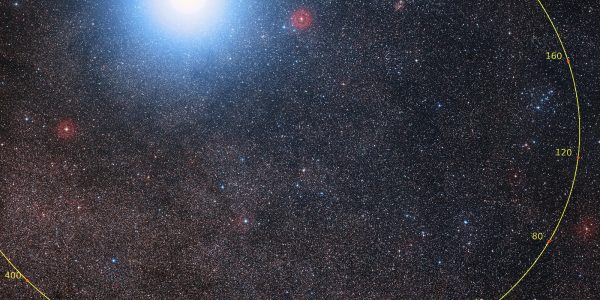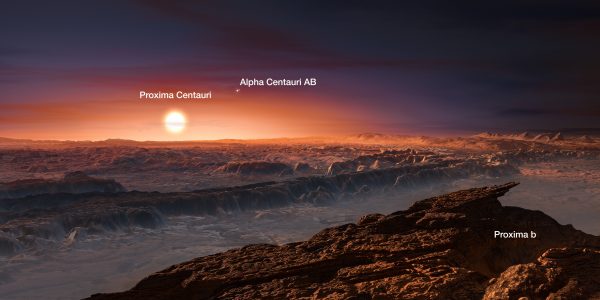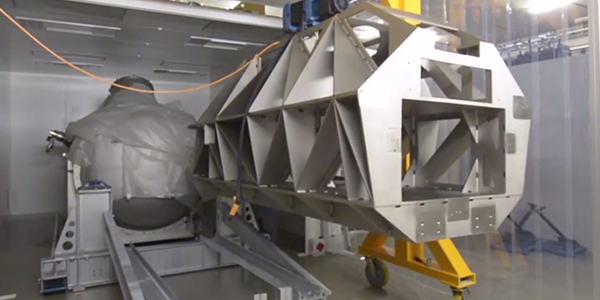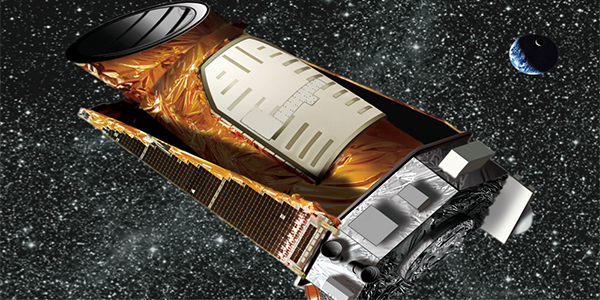Author Archive
10 times denser than gold
An international team of astronomers led by Dan Bayliss of the Observatory of the University of Geneva and member of PlanetS discovered a brown dwarf, an object that is neither a star nor a planet, with a density never seen before. Ten times denser than gold! The measured density of the brown dwarf EPIC201702477b is […]
Continue ReadingMayor and Queloz laureates of the Wolf prize
Professors Michel Mayor (Faculty of Sciences UNIGE) and Didier Queloz (Faculty of Science UNIGE / Cambridge University) both members of PlanetS share the Wolf Prize for Physics 2017. This distinction, considered one of the most prestigious after the Nobel Prize in physics, Is attributed for their discovery of the first extra-solar planet in 1995, while […]
Continue ReadingThe atmosphere of Proximab
In an article published in A&A early January, a team led by Christophe Lovis of PlanetS shows that it would be possible to analyze the atmosphere of Proximab, the exoplanet closest to Earth, using existing instruments. The discovery last August of Proximab, the planet orbiting the closest star to the Sun, had caused a sensation. […]
Continue ReadingIt’s confirmed, Proxima b has three suns
A team of astronomers including Christophe Lovis, member of PlanetS, confirmed in a press release distributed by ESO that Proxima is gravitationally bound to its neighbors Alpha Centauri A and B. Since the discovery of Proxima in 1915 its proximity in the sky with Alpha Centauri and the similarity of their distance to the Sun […]
Continue ReadingEarth twin planet found in the habitable zone of the nearest star to the sun.
A team of astronomers has discovered a planet similar to Earth orbiting Proxima Centauri in just over 11 days. This planet is at a distance from its star that would allow water to remain in its liquid state. Proxima Centauri is a red dwarf located 4 light years from Earth and is one of the […]
Continue ReadingA new building for planets hunters
Astrotech, the new building of the Astronomical Observatory of the University of Geneva was inaugurated on Monday 27th June, in the presence of the local authorities of Versoix, and Geneva and a representative of the federal authorities. Over 80 responded to the University invitation to attend the inauguration together with a large part of the […]
Continue ReadingPlanning Starts for HIRES Instruments on the E-ELT
The Universities of Bern and Geneva and members of the NCCR PlanetS are involved in one of the instruments for the world’s biggest telescope. Scientists and engineers have begun mapping out the detailed specifications of two new instruments that will be part of the instrument suite on ESO’s forthcoming European Extremely Large Telescope (http://www.eso.org/public/teles-instr/e-elt/) (E-ELT). […]
Continue ReadingThe most stable source of light
To test the accuracy and stability of the CHEOPS photometer, a light source with a variability of less than the 20 ppm is required for the satellite. Since this type of source does not exist on the market, a team of engineers and technicians of the NCCR PlanetS and the University of Geneva has developed […]
Continue ReadingOptical bench of ESPRESSO has arrived
After the arrival of the vacuum vessel that was installed last October 2014 in a temporary clean room, it is now the turn of the optical bench of ESPRESSO to be delivered to the University of Geneva Biotech Campus basement. An optical bench arrived by ship and truck from the Canary Islands in a box […]
Continue ReadingDiscover studying with real data
Although it is difficult to compare the Massive Open Online Course (MOOC) on exoplanets with other University of Geneva MOOCs – considering that astronomy studies offer less job prospects than those of management or IT – MOOC Exoplanets has nevertheless been a great success. There were 22,000 registrations, 12,000 were “present” and 1,100 have answered […]
Continue Reading










